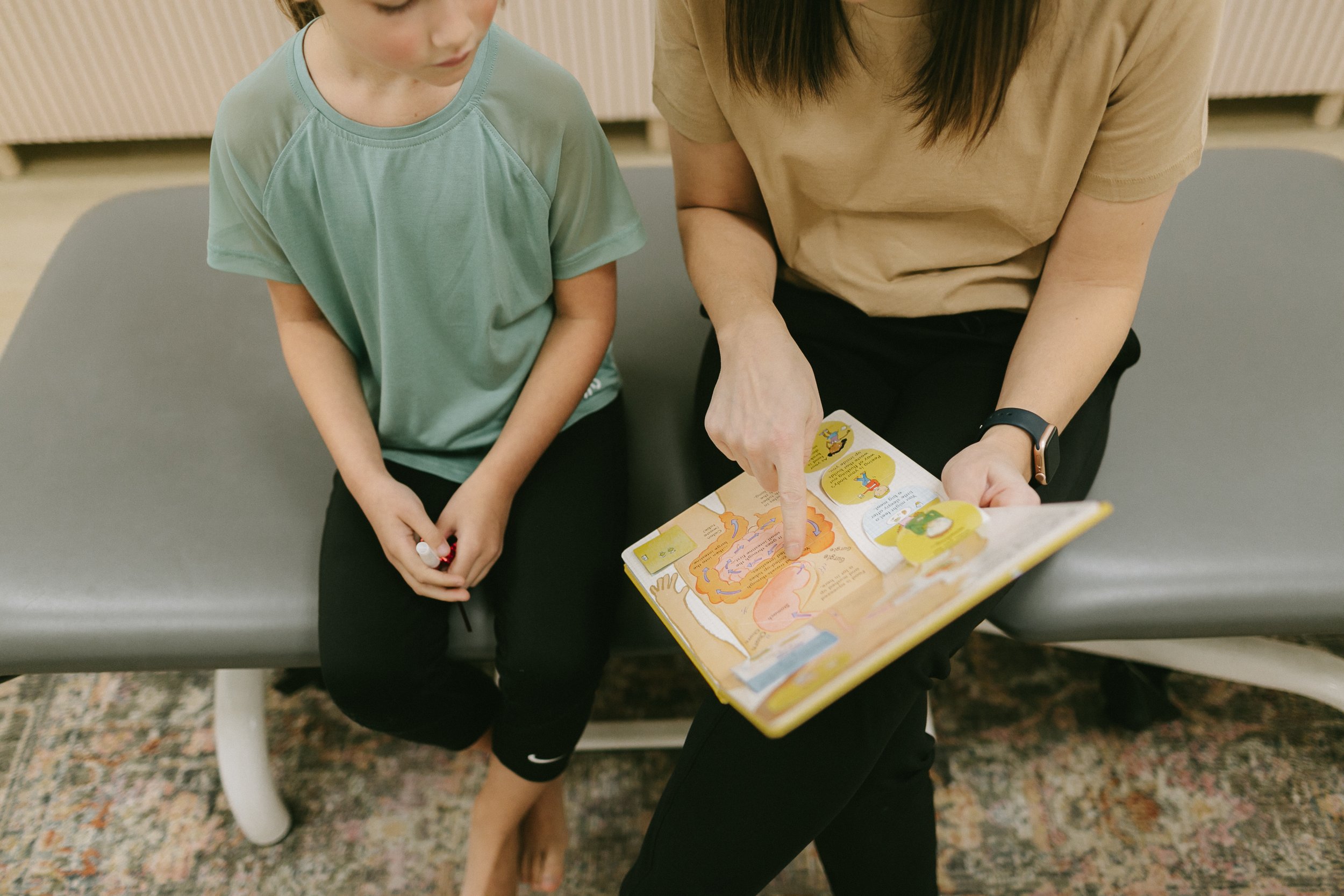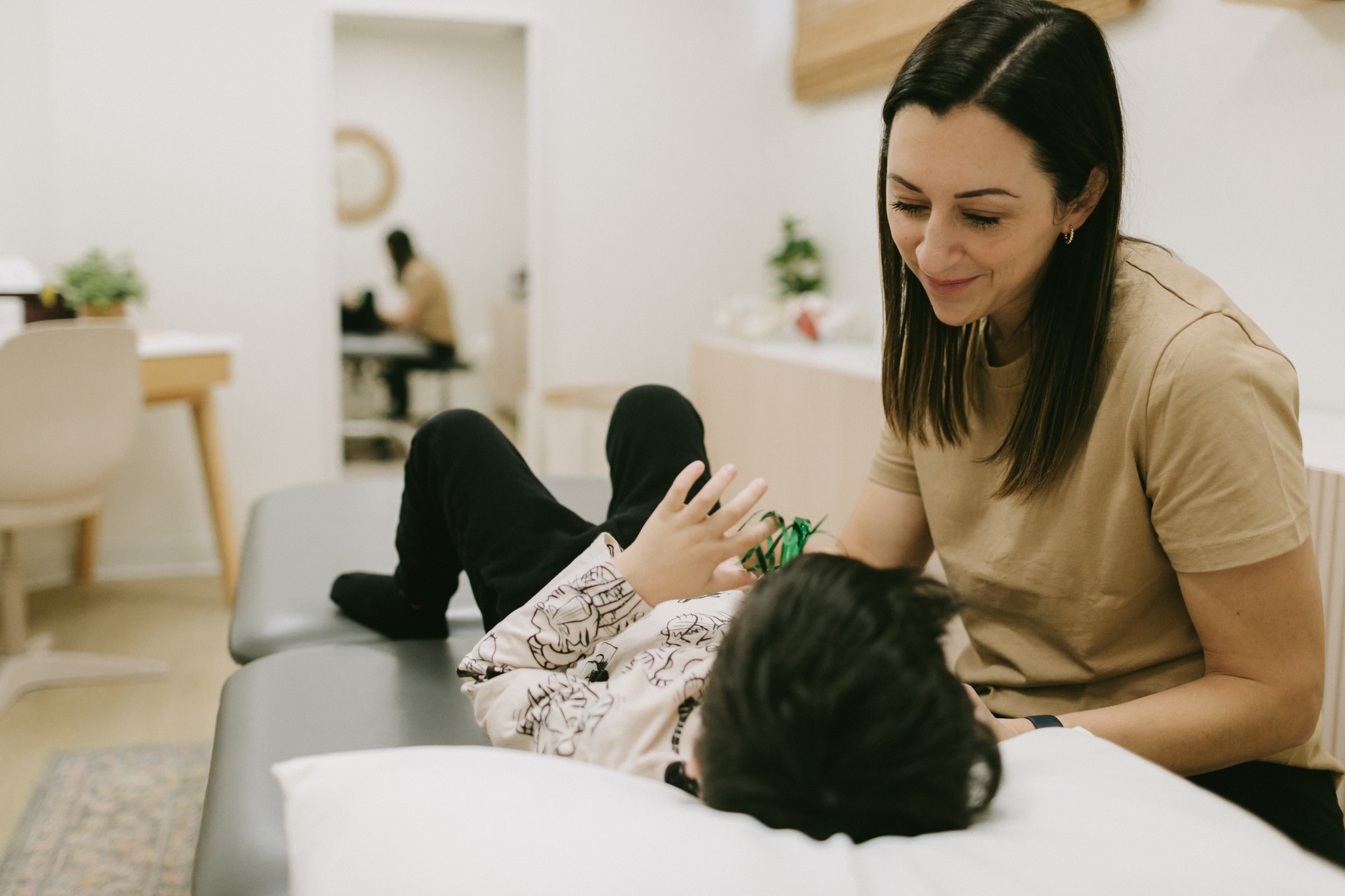Pediatric Pelvic Health Physiotherapy: A Comprehensive Guide for Parents
A child's well-being is a top priority for parents and caregivers. As we navigate the complexities of child health, there's one aspect that often goes under the radar but is of utmost importance: pediatric pelvic health. This blog post aims to provide a comprehensive guide to pediatric pelvic floor physiotherapy, addressing its importance, common conditions in children, the role of physiotherapy, and the potential benefits. It will be a valuable resource for those looking to understand and utilize this specialized form of physiotherapy in pediatric care.
What is Pediatric Pelvic Health Physiotherapy and Why is it Important?
Pediatric pelvic physiotherapy is a specialized service focusing on the unique needs of children who experience pelvic health concerns such as constipation, leaking, and bedwetting. The pelvic floor, a complex network of muscles, ligaments, and connective tissues, plays a pivotal role in maintaining bladder and bowel control, sexual function, and core stability. Issues related to the pelvic floor can affect children in various ways, impacting their physical, emotional, and social development.
Common Pediatric Pelvic Floor Conditions
Enuresis (Bedwetting)
Bedwetting may occur with or without other lower urinary tract symptoms such as daytime incontinence, urgency, holding maneuvers, constipation, etc. Nighttime wetting beyond the age of 5 can be challenging for both children and parents. Pediatric pelvic health physiotherapy can help you understand the root cause of the issue and provide effective strategies to help your child gain better bladder control.
Encopresis (Fecal Incontinence)
Encopresis is when a child leaks stool onto themselves or their clothing and is usually involuntary. Most often this occurs in children who are constipated as liquid stool moves past impacted stool in the rectum. Management strategies include treatment of constipation and pelvic floor physiotherapy to address toileting habits and optimize pelvic floor muscle function.
Constipation
This is characterized by infrequent bowel movements and/or the presence of hard, dry stool. Children may experience stomach pain, pain with a bowel movement, or stool leakage (due to a backup of stool in the rectum). If bowel movements are painful children may become fearful and develop holding patterns to avoid it, which can worsen constipation. Pelvic floor physiotherapy is beneficial in addressing toileting habits including potty posture and optimizing pelvic floor muscle function to ensure proper evacuation techniques. Your child's doctor may also prescribe a laxative to help treat constipation.
Dysfunctional Voiding
Defined as an interrupted or inconsistent urine stream due to the contraction of the urethral sphincter and pelvic floor during voiding. As we are voiding our pelvic floor needs to fully relax to allow urine out of our bladder. Treatment of dysfunctional voiding includes pelvic floor training to improve relaxation and motor control during a void. This is important to ensure adequate bladder emptying to prevent post-void residuals which can contribute to urinary tract infections.
Urinary Incontinence
This may include leakage associated with the urge to pee (urge incontinence), and/or in response to a jump, sneeze, cough, or laugh (stress incontinence). Giggle incontinence is the complete emptying of the bladder associated with laughing and is more common in prepubescent girls. Treatment of incontinence includes education and behavioural modifications surrounding voiding schedule, bladder irritants and fluid intake, constipation management, and pelvic floor muscle training.
Underactive or Overactive Bladder
Overactive bladder is an increase in urinary urgency, frequency, and nocturia (waking at night to void) with or without incontinence. Underactive bladder is a reduction in urinary frequency, or an increase due to the presence of a post-void residual and may involve straining to empty the bladder. Treatment includes education and behavioural modifications surrounding voiding schedule, bladder irritants and fluid intake, constipation management, and pelvic floor muscle training. Depending on the case, medication may also be recommended by your child’s doctor.
Voiding Postponement
Voiding postponement is characterized by low voiding frequency, the feeling of urgency due to a full bladder, and possible leakage due to a full bladder, all in the presence of habitual holding maneuvers. Treatment includes standard urotherapy such as voiding schedule, bladder irritants, and fluid intake. Depending on the case, support for behavioural disturbances may be beneficial.
Bowel Bladder Dysfunction
This includes the presence of bowel and bladder symptoms together, such as constipation, overactive bladder and/or incontinence. Constipation management is the top priority in treating bowel bladder dysfunction. Other treatments include education and behavioural modifications surrounding voiding schedule, bladder irritants and fluid intake, and pelvic floor muscle training.
Pelvic Pain
There are various conditions or diagnoses that may contribute to pelvic pain. Some common causes include tension in the pelvic floor, constipation, or urinary tract infections. Pelvic floor physiotherapy can help with down training and relaxation of the pelvic floor, education on bladder function and its relationship to the pelvic floor muscles, bladder health and irritants, bladder retraining, and constipation management. If your child is experiencing pain with urination, it is important to consult their doctor to assess for a urinary tract infection.
When to Seek Pediatric Pelvic Floor Physiotherapy
If your child is 5 or older and experiencing any symptoms of the above-listed conditions, active physiotherapy management is recommended. If between 2-5 and you are struggling with potty training or your child is symptomatic and you are looking for guidance and support, you may also seek care.
Benefits of Pediatric Pelvic Health Physiotherapy
Improved Continence and Bowel Function
Pediatric pelvic floor physiotherapy plays a crucial role in improving continence and bowel function in children. Through targeted exercises and strategies, children can develop better control over their pelvic floor muscles which aids in managing and preventing issues like bedwetting (enuresis), urgency, incontinence, and difficulties with bowel movements.
These therapies focus on strengthening weakened muscles, teaching relaxation techniques for overactive muscles, and providing guidance on proper bladder and bowel habits. The goal is to optimize muscle coordination, leading to better control and increased confidence for the child.
Pain Relief
Pediatric pelvic pain can be distressing and debilitating for children. Pelvic health physiotherapy employs specialized techniques to address and manage pelvic pain effectively.
Treatment plans may include targeted exercises, manual therapy, relaxation techniques, and sometimes biofeedback, to reduce pelvic pain and discomfort and improve overall well-being, allowing children to engage more comfortably in daily activities.
Enhanced Quality of Life
Pediatric pelvic floor physiotherapy significantly enhances the overall quality of life for children facing pelvic health issues. By addressing these concerns early and effectively, children experience reduced stress, improved self-esteem, and a greater sense of independence. Gaining control over bladder and bowel function, managing pain, and feeling more confident in social settings contribute to a better quality of life for children and their families.
The ability to engage in regular activities without fear of accidents or discomfort leads to increased participation in school, social interactions, and recreational activities. Ultimately, this empowers children to enjoy a more fulfilling childhood.
Prevention of Long-Term Issues
Early intervention through pediatric pelvic floor physiotherapy can prevent long-term pelvic health issues. Addressing concerns during childhood can mitigate the risk of persistent problems in adulthood. By teaching children proper bladder and bowel habits, promoting muscle coordination and strength, and correcting any imbalances or dysfunction, physiotherapy helps set a foundation for lifelong pelvic health.
Pediatric Pelvic Health Physiotherapy Process
Initial Assessment and Diagnosis
A comprehensive assessment by a pediatric pelvic health physiotherapist is the first step. During this session, we will listen to the parent's or caregiver's concerns and gather information about the child's medical history, pelvic health issues, and any relevant symptoms. We will set expectations by explaining the goals of the initial consultation, the assessment process, and the general approach to pediatric pelvic health physiotherapy. A physical examination will be performed to assess pelvic floor muscle function, coordination, strength, and any potential areas of tension or weakness. A pediatric pelvic floor assessment is non-invasive and done externally with or without palpation. We will also evaluate bladder and bowel habits, toileting behaviours, and any functional difficulties the child may be experiencing.
Tailored Treatment Plan & Therapeutic Sessions
Following the assessment, a personalized treatment plan is developed based on your child's specific needs. We will establish achievable goals and milestones for improving pelvic health function and create a tailored program to achieve these goals. Treatment may involve age-appropriate exercises to strengthen or relax pelvic floor muscles, improve coordination, and optimize function. Interactive methods incorporating play or engaging activities may be utilized to make sessions enjoyable for the child. Education on proper toileting habits and behavioural strategies to promote healthy bladder and bowel habits will be given. Depending on the child's age and needs, hands-on techniques to address muscle tension or imbalances and biofeedback to assess and treat pelvic floor muscle function may be utilized.
Monitoring and Adjustments
Throughout the treatment process, we will continually monitor your child's progress and make necessary adjustments to the treatment plan. Regular follow-up sessions will be recommended to assess progress, review exercises, and make any needed modifications. The frequency and amount of follow-up sessions will vary depending on the child’s presentation. Exercises, techniques, or strategies will be adjusted based on the child's response and progress. Ongoing education to the child and caregivers about the child's pelvic health and strategies for continued improvement will be provided.
Tips for Parents and Caregivers
Preparing for Pediatric Pelvic Floor Physiotherapy
Educate yourself: Learn about pediatric pelvic floor physiotherapy. Understanding the treatment process, what to expect during sessions, and the potential benefits can help you and your child feel more comfortable and prepared.
Open communication: Encourage an open dialogue with your child about their concerns and any discomfort they may be experiencing. Create a supportive environment where your child feels comfortable expressing their feelings or any anxieties about the therapy.
Set realistic expectations: Discuss with the physiotherapist the expected duration of treatment, the frequency of sessions, and the potential outcomes. Understand that progress may take time and consistency in following the treatment plan is crucial.
Prepare your child: Before the first session, explain to your child in age-appropriate terms what to expect during the assessment and treatment. Reassure them that the physiotherapist is there to help and support them.
Supporting Your Child Throughout the Process
Emotional support: Offer reassurance and emotional support to your child. Acknowledge their efforts and progress and praise their participation in therapy sessions. Emphasize that seeking treatment is a positive step towards feeling better.
Encourage consistency: Help your child follow through with the recommended exercises or habits suggested by the physiotherapist. Consistency is key to achieving positive outcomes.
Encourage openness: Encourage your child to communicate any discomfort, concerns, or changes they experience during or between therapy sessions. Ensure they understand that their feedback is valued.
Celebrate progress: Celebrate milestones and improvements in your child's pelvic health journey. Acknowledge their efforts and achievements, no matter how small, to boost their confidence and motivation. Understand that progress can vary for each child, and be patient and supportive throughout the process.
Conclusion
Pediatric pelvic floor physiotherapy plays a vital role in addressing various pelvic health concerns that impact a child's well-being. Early identification and intervention in childhood can prevent the development of chronic pelvic health issues in adulthood. Treating concerns early reduces the risk of persistent problems, promoting better health outcomes later in life.
By emphasizing the pivotal role of pediatric pelvic floor physiotherapy in child healthcare and advocating for early intervention, children can experience improved health outcomes and a better quality of life. Don't hesitate to seek guidance and support when it comes to your child's well-being and remember that you're not alone on this journey to wellness.
If you are interested in booking an assessment for your child, you can do so by visiting my online booking page.


